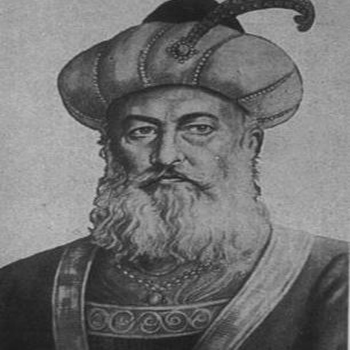Arab and Turk Conquest
As Harshvardhana and Pulakesin-II were struggling for supremacy in India, a revolutionary change was taking place, not to far from these shores the emergence of Islam in Arabia.
Arab conquest of Sindh
From The Ancient Times, India was famous as the fanatical land and was called golden Sparrow.
Arab's Were Conquering the world, starting from Syria, Palestine, Egypt and Persia while India was Struggling with the unstable kingdom of Hindu's Harshvardhana was the last Hindu Emperor and his death brought political instability in India.
Effects of the Conquest of Sindh
- Religious Changes: Islam was established in Sindh and Multan. The attempt failed as Rajput's had a strong position in North.
- Political and Social impact on India: The poor management of Hindu rulers and their weak army strengths were in front of the world which developed the interest of Arabs to occupy the entire India.
- The
Arab open the way communication with the other Islamic regions and thus
the direct trade and business with Islamic countries started (should be
added or not).
Invasion of Sindh by Muhammad bin-Qasim (695-715AD)
- A 17 Years old boy was ambitious, a great warrior, courageous.
- He was born and brought up in the Taif now in Saudi Arbia.
- He invaded Sindh and Multan area. This is a historical win which has its impact on the history of world.
- The Arab for long the carries of Indian trade with Europe, were attacked by rich Sea-Ports of Sindh. However two Expedition sent by Al-Hajaj the Governor of Iraq failed.
Mahmud of Ghazni (971-1030)
- Mahmud came to India to the throne of Ghazni in AD 997. He started his raid on India in AD of 1001 by attacking and killing Jaipala, the king of Punjab First battle of Waihind.
- The Sixth expedition (The second Battle of Waihind) was against Anandpala (Hindushahi ruler of Punjab) in 1008. The next expedition in 1009 was against Nagarkot in the Kangra Hills.
- Disneyland 17 expedition between 1001 and 1027. He plundered Thanesar, Mathura, Kannauj and Somnath.
- The temple of Somnath dedicated to Shiva was plundered in 1026, situated on the Sea coast of Kathiawar (Gujarat).
- Utbi regarded as a great literary figure at that time, he was Mahmud's court historian. His Kitab-ul-Yanmi or Tarikh-I-Yamni is a Book of Mahmud life and Times.
- Firdausi (Persian poet) known as the Immortal Homer of the East wrote the Shahanama, Al Beruni a brilliant scholar from Central Asia wrote Tahqiq-i-hind.
Attack's of Mahmud of Ghazni:
- Mahmud of Ghazni for the first time attacked modern Afghanistan and Pakistan in 1000AD. He defeated Hindu ruler Jayapala, who who committed suicide for himself later and was succeeded by his son Anandpala.
- Ghazni invaded Bhatia in 1005 AD.
- Ghazni invaded Multan in 1006 AD. During this time Anandpala attacked him.
- Mahmud of Ghazni attack and crush Sukha pala, a ruler of Bhatinda in 1007 AD.
- Ghazni Attacked Nagarkot in Punjabi hills in 1011 AD.
- Mahmud of captured Thanesar in 1014 AD.
- Mahmud of Ghazni attacked Kashmir in 1015 AD.
- He attacked Mathura in 1018 AD and defeated coalition of Ruler, including ruler called Chandra Pala.
- Mohammad Ghazni attack the Somnath temple 1025 AD to loot a wealth amassed inside the temple.
- Muhammad conquered Kannauj in 1021 AD by defeating Kannauj king Chandella Gauda.
Why Mahmud Ghazni Attacked in India?
- He was attracted to the enormous wealth of India. This help him rapidly raid India. He also added religious dimension to his invasion of India.
- He destroyed the temple of Somnath, Kangra, mathura and Jwalamukhi to earn the nick name if Idol of Breaker.
Impact of Ghaznavi's attacked in India
- Although there is no deep political impact of the Ghaznavi invasion on India, Itexposed the shortcoming of the war strategies of the Rajputs kings.
- It Also revealed that there was no political unity in India and it invited more attacks in future.
- He Was Known as Star of Islam.
Mohammad Ghori
- Unlike Mahmud, Ghori was not great general and had to suffer humiliating defeats several times.
- He was defeated by Maharaja II, the ruler of Gujarat; by Prithviraj Chauhan in the first battle of Tarain and by Khwarizam Shah, the ruler of Persia. In fact After his victory over Prithviraj, instead annexing Delhi and Ajmer to his territories, he handed over the administration of Delhi and Ajmer to the relative of Prithviraj.
- Prithviraj was defeated in Second Battle Tarain. AD 1192 Delhi and Ajmer were captured by Mohammad Ghori.
- He capture Delhi and Ajmer and thus, laid the foundation of Muslim rule in India.
- Ghori did not change the statue of those Hindu chiefs who accepted his suzerainty and did not interfere in there administration. Of course, he established forts in these territories.
Great ability to select officers:
Ghori had art of selecting of the best man for his services. He trained general and administrators like Qutab-ud-din Aibak, who prove quite competent to maintain his empire.
Appointments of Governors:
Ghori appointed governors of provinces he conquered. These Governor consolidated the position of turks and they are suppressed rebellions. After the death of Ghori, Qutab-ud-din Aibak, his most able military commander founded the Slave dynasty that ruled India for about 100 years.





